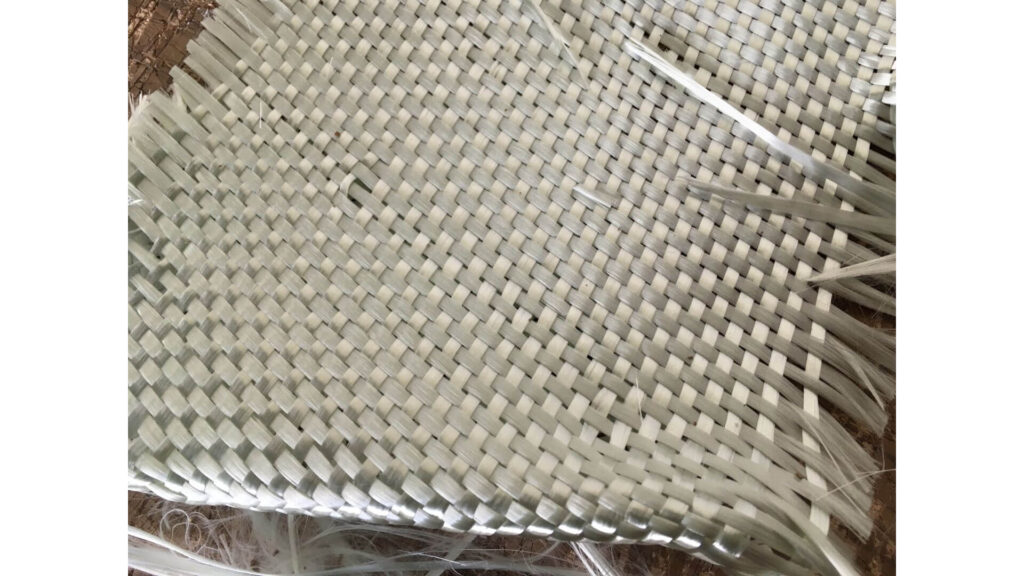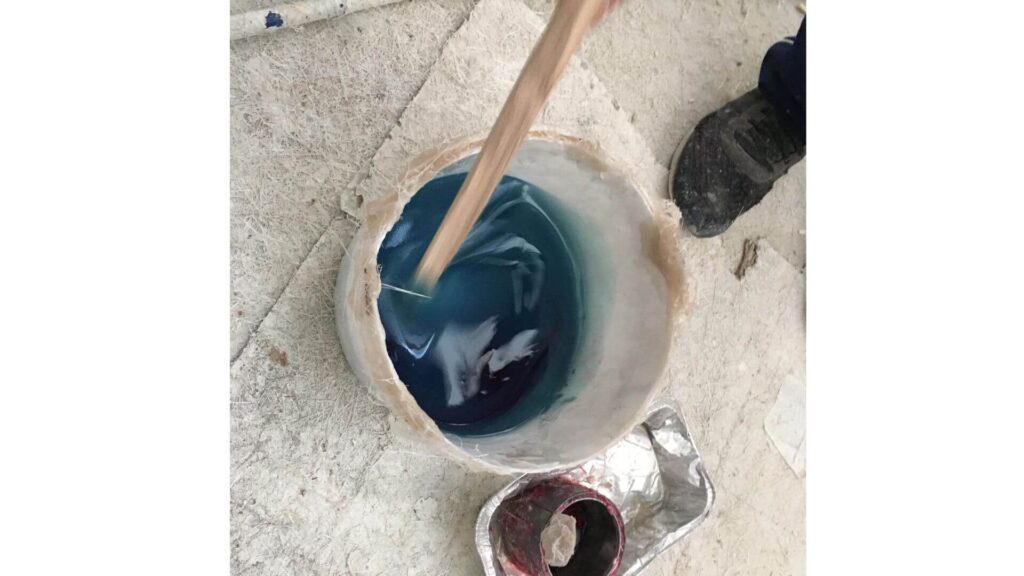If you’ve noticed a scrape, crack, or hole in your fiberglass boat hull, don’t let it sink your spirits.
With some elbow grease and a bit of know-how, you can patch things up and get back to smooth sailing.
In this guide, we’re diving into the step-by-step process of repairing your fiberglass boat hull from the outside, ensuring your vessel stays in tip-top shape.
Understanding Gelcoat Damage Types
Before you can effectively repair your boat hull, it’s important to recognize the types of damage that can occur to the gelcoat. Gelcoat serves as a protective layer for the fiberglass beneath, but it can sustain various forms of damage over time:
- Scratches and Scuffs: These are common and can often be buffed out or filled with a gelcoat repair paste.
- Spider Cracks: Fine cracks that can appear in the gelcoat due to stress, impact, or environmental factors.
- Chips and Gouges: Deeper damage that can penetrate through the gelcoat into the fiberglass layer.
- Osmotic Blisters: These occur when water penetrates the gelcoat, causing blisters to form in the underlying fiberglass.
Each type of damage requires a slightly different repair approach, but the fundamentals of patching and refinishing with gelcoat remain the same.
How to Repair Fiberglass Boat Hull from the Outside?
Follow these nine steps to repair your fiberglass boat hull from the outside.
1. Assess the Damage
First things first, take a good look at the damage. Small nicks or scratches might only need a simple gelcoat touch-up, but larger breaches in the hull will require fiberglass repair.
If the damage is extensive, consider seeking professional help.
For those manageable DIY repairs, gear up for a rewarding project!
2. Gather Your Materials
Before you begin, you’ll need the right materials:
- Fiberglass repair kit or individual components (resin, hardener, cloth)
- Sandpaper (coarse and fine grit)
- Protective gear (gloves, mask, goggles)
- Acetone or a cleaning solvent
- Mixing tools and containers
- Putty knife or spreading tool
- Plastic sheeting or release film
3. Prep the Area

A successful repair starts with preparation. Clean the damaged area with acetone to remove waxes or oils.
Next, sand down the area with coarse sandpaper to create a rough surface that the new fiberglass will adhere to.
Clean off the dust and debris before moving on.
4. Cut the Fiberglass Cloth

Measure and cut your fiberglass cloth so that it extends beyond the damaged area. This overlap is crucial for creating a strong repair.
If the damage is deep, you’ll need multiple layers, each slightly larger than the last, to build up the hull’s thickness.
5. Mix and Apply the Resin

Following the instructions in your fiberglass repair kit, mix the resin and hardener.
Apply a thin layer of this mixture to the prepped area using a putty knife or spreader. Then, place your first layer of fiberglass cloth onto the resin.
Ensure there are no air bubbles or creases.
6. Build Up the Layers
After the first layer is in place, apply more resin over the top.
Continue to add layers of fiberglass cloth and resin until you’ve restored the hull’s original thickness.
Allow each layer to cure slightly before adding the next for the best results.
7. Sand and Finish
Once the repair has fully cured (which can take several hours to overnight, depending on weather conditions and the resin used), it’s time to sand the area smooth.
Begin with coarse sandpaper to remove any high spots or rough edges, and then transition to finer grit to achieve a smooth finish.
8. Apply Gelcoat

After sanding, clean the area again to remove all dust. Now, apply gelcoat to the repair site.
Gelcoat is the outermost layer on your hull and helps protect the fiberglass from water and UV damage.
If you can, match the gelcoat to your boat’s existing color for a seamless repair. Apply the gelcoat as smoothly as possible with a brush or spray gun, depending on the size of the repair.
9. Final Sanding and Polishing
Let the gelcoat cure fully. This could take several hours or even a day.
Once it’s hard, wet sand the area starting with a medium-grit sandpaper and working your way up to a fine or ultra-fine grit.
This will blend the repair with the rest of the hull and give it a polished look.
Finish off with a buffing compound and wax for a glossy, protective finish.
Tips for a Successful Repair
- Always wear protective gear to avoid skin irritation and fumes from the resin and gelcoat.
- Work in a well-ventilated area to ensure proper curing and reduce exposure to harmful vapors.
- Take your time with each step to avoid rushing, which can lead to a less-than-ideal finish.
- If the damage is near or below the waterline, ensure the repair is watertight to prevent future issues.
Considerations for Working Conditions
When planning your fiberglass boat hull repair, the working environment is crucial. While it might seem like a sunny day is the perfect time to work on your boat, direct sunlight can be a double-edged sword. Here’s why:
- Temperature: Resin and gelcoat can cure too quickly in the sun, which might lead to an improper bond or a less smooth finish.
- Workability: In the sun, materials can become too hot to handle, and the glare can make it difficult to see imperfections in your work.
- Curing Process: UV rays can interfere with the curing process, potentially weakening the repair.
For these reasons, it’s often best to do repair work in a shaded, well-ventilated area where temperature and lighting can be controlled.
If you must work outside, try to do so during cooler parts of the day or use a temporary shelter like a canopy.
Repairing Hull from Outside vs. Inside
Repairing a hull from the outside versus the inside has different considerations and steps involved. Here’s how they differ:
- Outside Repairs: Typically involve cosmetic and structural issues visible from the boat’s exterior. These repairs focus on restoring the hull’s smooth surface and are usually sufficient for minor to moderate damage.
- Inside Repairs: These are necessary when the damage has penetrated through the entire thickness of the hull. These repairs are more complex and involve working on the internal layers of fiberglass to restore structural integrity.
Outside repairs are generally more common and can be tackled by DIY enthusiasts.
Inside repairs, however, can be more complex due to the need to access the inside of the hull and may require the skills of a professional.
It’s also worth noting that inside repairs may involve additional steps like removing interior components or even cutting through the hull to access the damage.
In both cases, it’s essential to ensure the repair is watertight, especially if the damage is at or below the waterline.
Properly done, both types of repairs can restore the strength and appearance of your fiberglass boat hull, ensuring you remain confidently afloat.
Final Word
Repairing a fiberglass boat hull from the outside is a doable project for even the novice DIYer.
With patience and attention to detail, you can restore your boat’s integrity and aesthetics, ensuring many more years of enjoyment on the water.
Remember, the key to a great repair is proper preparation, layering, and finishing. Now, with your boat hull back in shipshape, it’s time to set sail once again!
If you found this guide helpful, don’t forget to share it with your fellow boating enthusiasts.
You should also read my full guide on repairing a fiberglass boat here. You will learn how to fix all types of damages on your fiberglass boat.


